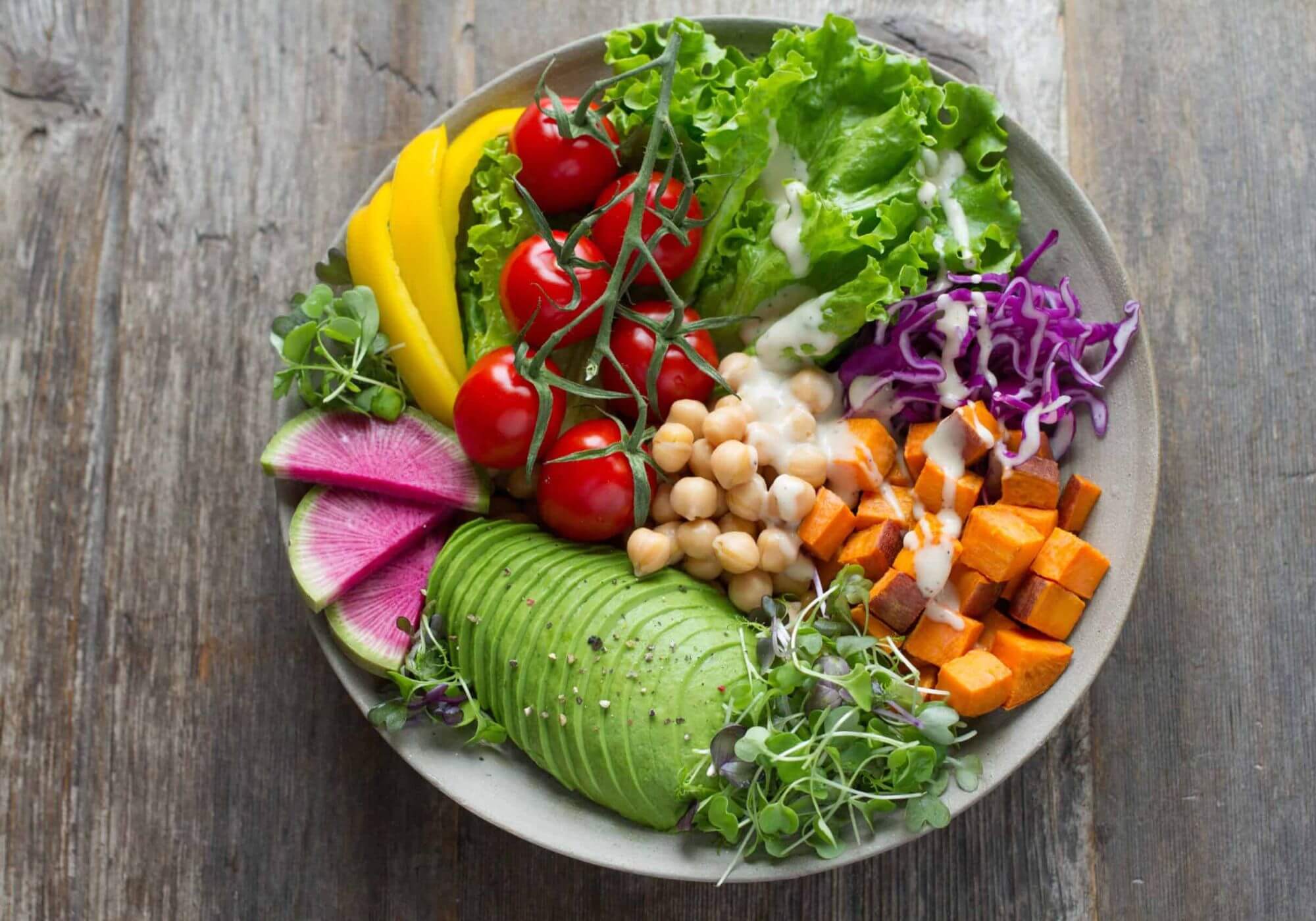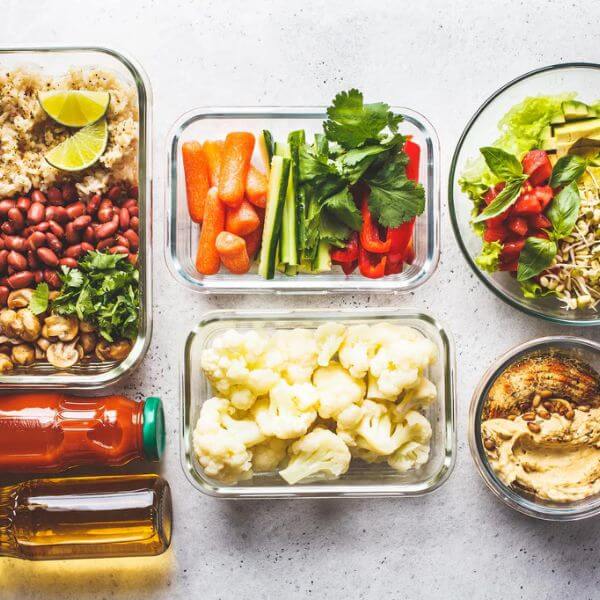The Rise of the Plant-Based Diet in the USA 2025
Written By - Tarian Voss
on November 11, 2025

The Rise of the Plant-Based Diet in the USA 2025: Health Meets Sustainability
Introduction: America’s Green Plate Revolution
Food in America has always reflected what’s happening in society—our shared struggles, our dreams, our quirks, and our need to come together. In 2025, the plant-based diet is much more than a health trend; it’s a human story woven through families, neighbourhoods, school cafeterias, TikTok feeds, and bustling city diners. It’s about how people hope for change, face everyday setbacks, find joy at the dinner table, and keep going anyway.
A Diet, or a Cultural Movement?
Everywhere you look, someone seems to be rethinking their habits. Maybe you overhear a dad in the grocery aisle debating coconut milk versus oat. Or a grandma in Kansas, once sceptical, who now rocks family picnics with her famous black bean salad. The numbers back it up: in 2025, about two-thirds of Americans genuinely want to eat more plants, but only one in five have made plant centered meals a regular habit. It’s the classic American “intention gap”—we all want to do better, but real change takes time, encouragement, and a little help from our friends.
Why Are People Craving the Plant Based Diet?
- Health, first and foremost. Americans are tired of feeling sluggish, tired of watching loved one’s battle health issues that could be prevented. A plant-based diet isn’t just food—it’s a shot at a healthier life, one meal at a time. The stories come fast: a Chicago teacher who used to pop blood pressure pills now finds her numbers dropping simply by eating more fibre-rich meals. A college runner in Texas recovers faster, with fewer injuries, since swapping his nightly burgers for hearty lentil stews.
- Climate and compassion. The planet’s problems feel less distant when wildfires hit your own state or clean water warnings flash on the news. People are learning that what’s on their plate can shrink their personal carbon footprint by as much as 75%—a climate solution within reach, unlike expensive home solar panels or electric cars. Animal lovers drive the movement too, often describing the plant-based diet as “quiet activism”—each tofu taco one less reason for a factory farm to expand.
- Social media and belonging. The plant-based diet is social. It’s about swapping recipes, tagging friends in Insta-worthy smoothie bowls, and crowd-sourcing tips for creamy cashew cheese. Veganuary, the annual vegan challenge, drew 25.8 million sign-ups in January 2025 alone—many of whom kept going after the challenge ended.

Daily Life, Real Stories
Consider how the plant-based diet quietly transforms daily life.
- A morning in Miami: Mom pours almond milk over old-school oatmeal, watching her kids giggle over banana “smiley faces” instead of sugary cereals. The kitchen smells cozy—cinnamon, maple, toasted walnuts.
- A student in Atlanta: She rushes to class, banana in one hand, vegan protein bar in the other. She started this diet for animal rights but found better focus and zero afternoon crashes as a bonus.
- A retiree in Portland: After a health scare, he commits to cooking at home. Sunday afternoons are now for experimenting with soup recipes, FaceTiming his sister to show off kale chips and roasted chickpeas.
Each story is small—and deeply human.
Busting Plant Based Diet Myths, One Day at a Time
People often worry that a plant-based diet is expensive or boring. On the contrary, research and real-life stories show that plant-based eating can actually shrink grocery bills by 21% to 34%, especially when focused on staples: oats, beans, potatoes, and fresh, in-season produce. Kids raised on rice and bean burritos aren’t missing out—they’re growing up with familiar favorites, reimagined.
Others fret about missing protein, but the average American who adopts a plant-based diet gets what they need from everyday plant foods—chickpeas, lentils, tofu, and nut butters. Even fitness buffs are making the switch, with pea, hemp, and soy-based proteins now staples in gym bags.
Nutrient gaps like B12 and iron are real considerations, but easily managed with fortified foods, a little planning, or the occasional supplement. And let’s be real: everyone, plant based or not, could use help getting enough fibre each day!

The Community Side of the Plant Based Diet
No one succeeds in isolation. The plant-based diet flourishes because it brings people together:
- “Meatless Monday” potlucks where coworkers trade homemade chili and cornbread.
- Family gatherings where someone’s vegan lasagna becomes the unexpected star.
- University cafeterias that routinely offer flavourful, protein-packed plant-based options—not as afterthoughts, but as good, dignified food.
The effect is contagious. Gen Z and millennials are the most plant-curious generations yet, with some studies finding up to half considering or adopting plant-based habits. That curiosity is changing what restaurants serve, how supermarkets stock their shelves, and even what’s trending on DoorDash and Uber Eats.
Market Momentum: From Niche to Mainstream
The business world is catching on, fast. Already, the U.S. market for plant-based foods is racing toward a $44 billion valuation by 2035—a growth path that mirrors consumer excitement and staying power. Plant based milks take up more and more fridge real estate in groceries, plant-based eggs sell out before noon, and alt-meat burgers outnumber chicken patties in some cafeterias. Companies that once sold only beef now roll out pea protein sausages, soy chorizo, and oat lattes, making old diets almost feel retro.
The figures tell the bigger story:
- 68% of Americans are interested in more plants, but only 20% have fully committed to plant focused eating habits.
- The Veganuary challenge broke records in 2025 with nearly 26 million participants globally.
- Plant based food sales and online interest have jumped by at least 24% in just a couple years.
What Does a Plant Based Diet Actually Look Like?
Here’s a candid look at a regular week for a modern American family:
- Breakfasts are bowls of hearty oats, peanut butter toast, or smoothies with spinach snuck in for iron.
- Lunch is often veggie wraps, black bean salads, homemade soups, or pasta with rich tomato lentil sauce.
- Dinner could be a veggie-loaded stir fry, three-bean chili, or jackfruit “pulled pork” sandwiches that leave even the sceptics asking for seconds.
- Snacks? Think roasted chickpeas or fresh fruit instead of processed sweets.
Every meal is a chance to experiment, celebrate, and share stories.
Challenges and What Keeps Folks Going
No journey is perfect, and the shift to a plant-based diet can feel intimidating. Barriers—like unfamiliar ingredients, family resistance, or the steady lure of old favorites—are real. Sometimes, pizza cravings or a tough week can tempt even the most dedicated. But success usually blooms where perfection isn’t the goal.
Those who thrive on a plant-based diet give themselves space to be flexible. “Flexitarian” isn’t defeat—it’s a strategy. One mom in Oregon swears by the “80/20 method”—eating plant based 80% of the time, with room for tradition or treats when life calls for it.
And the science keeps boosting spirits. People who switch to a plant-based diet for health often lose weight without counting calories, thanks to higher fibre and more filling meals. For some, chronic conditions fade; for many, mood lifts, skin clears up, and energy comes roaring back. Over and over, people describe “just feeling like themselves again.”
The Future: From Personal Plate to Global Impact
Zoom out, and the plant-based diet is about more than food—it’s a change ripple that touches households, communities, economies, and the very air we breathe. With nearly 25% of the U.S. population now vegetarian or vegan and ever more Americans dabbling in plant based living each year, this isn’t just a trend. It’s a solution-in-progress for planetary and personal problems alike.
When people choose beans over beef, they help their families, their budgets, and their world. They help farmers diversify, create green jobs, and keep food traditions alive, all while writing new ones.
Why the Plant Based Diet Feels So Human
In the end, the power of the plant-based diet is in its story: ordinary people, united by hope, humble curiosity, and the comforting fact that if you mess up today, there’s always another meal tomorrow. Every bowl of soup, every lentil wrap, every vegan cookie shared at work is a thread in a much bigger tapestry—one that’s shaping America’s next chapter.
So, whether you’re trying one plant-based meal a day, going vegan before six, or simply swapping dairy for oat milk in your morning coffee, you’re part of the most personal, powerful revolution happening in America today. It’s not flashy and rigid. It’s as forgiving as it is delicious—and it’s yours, one bite at a time.
More Blogs













